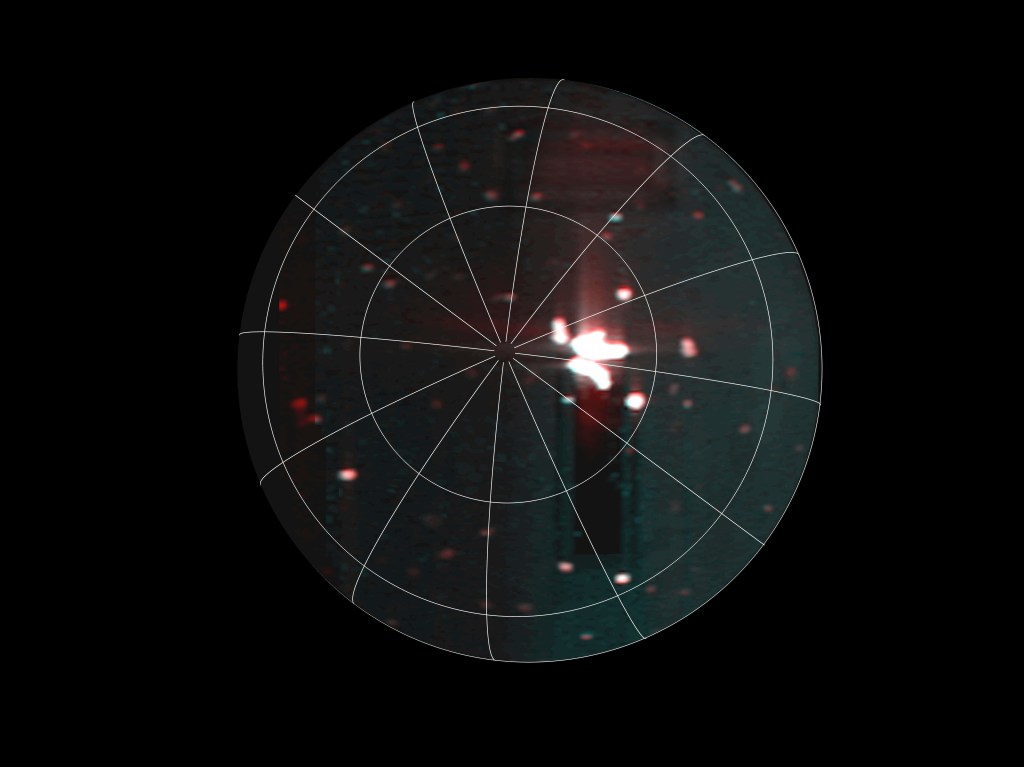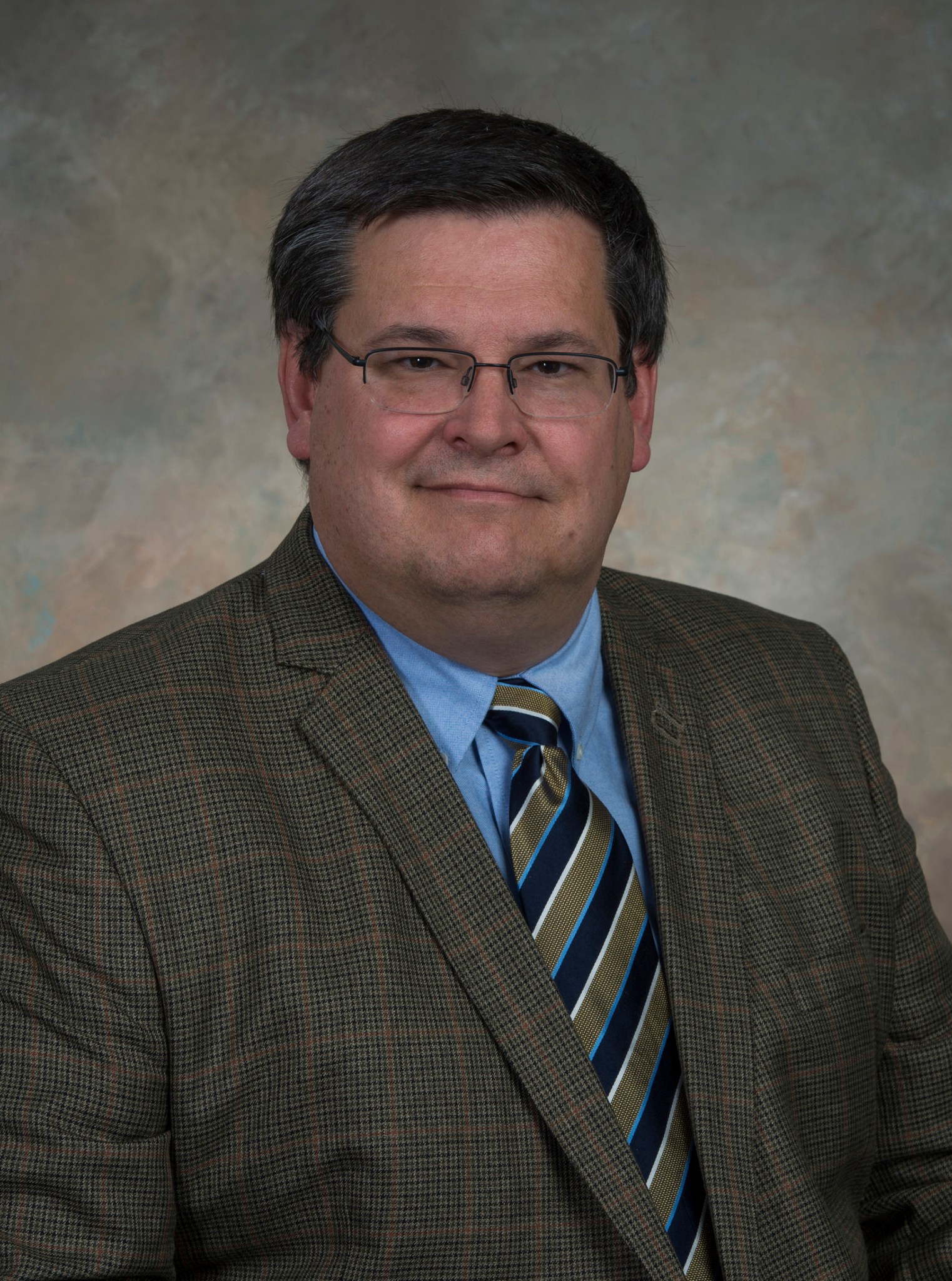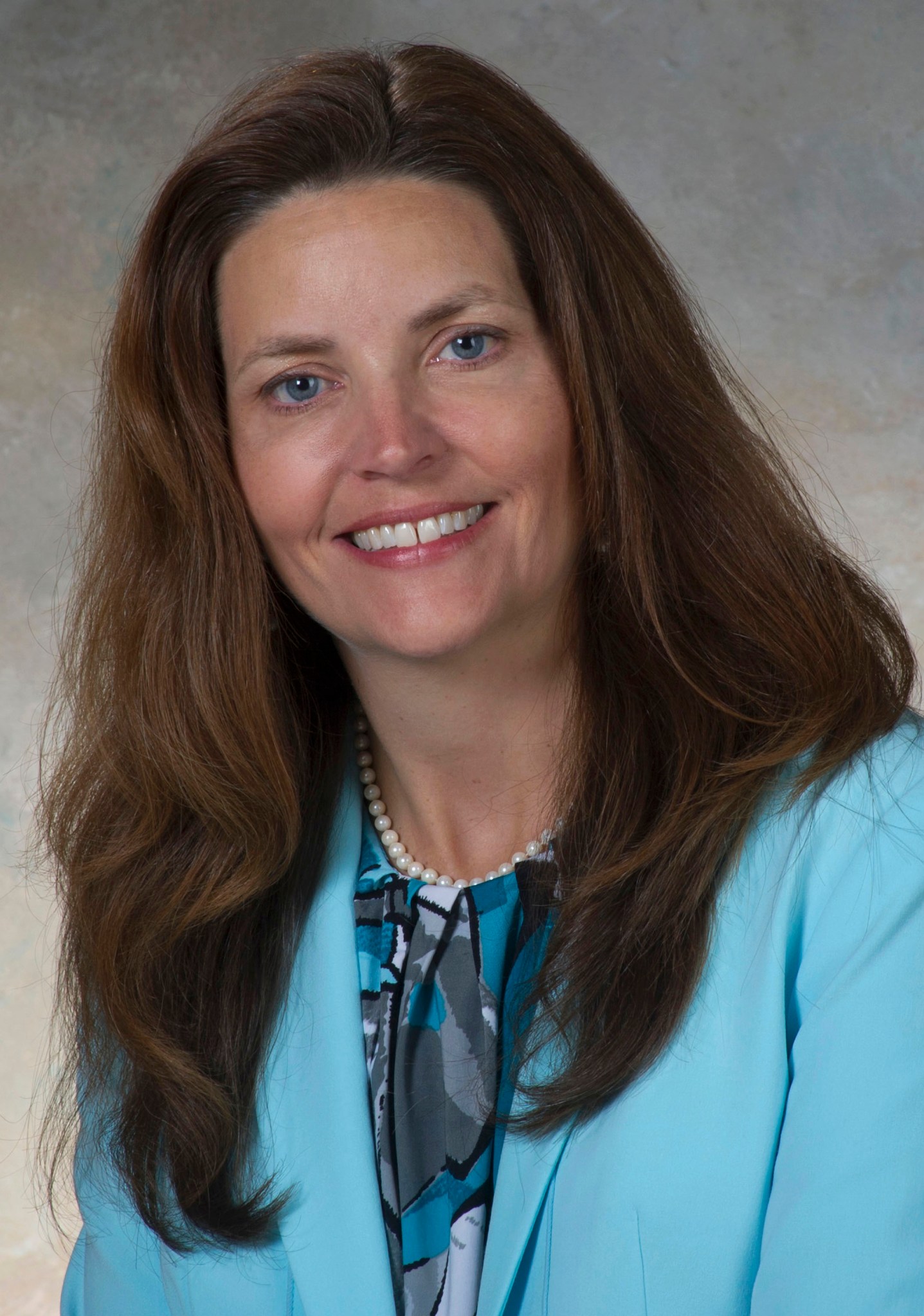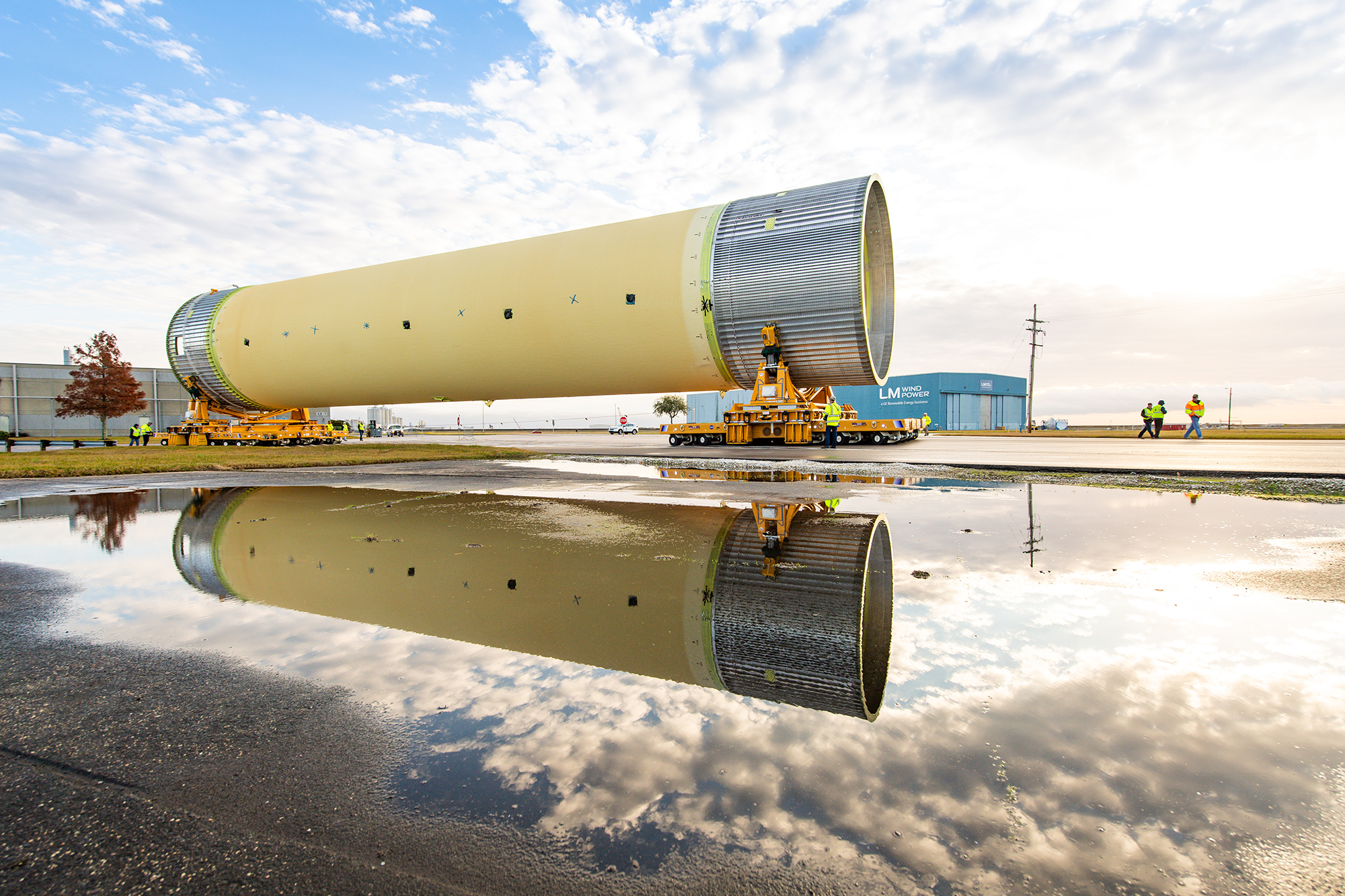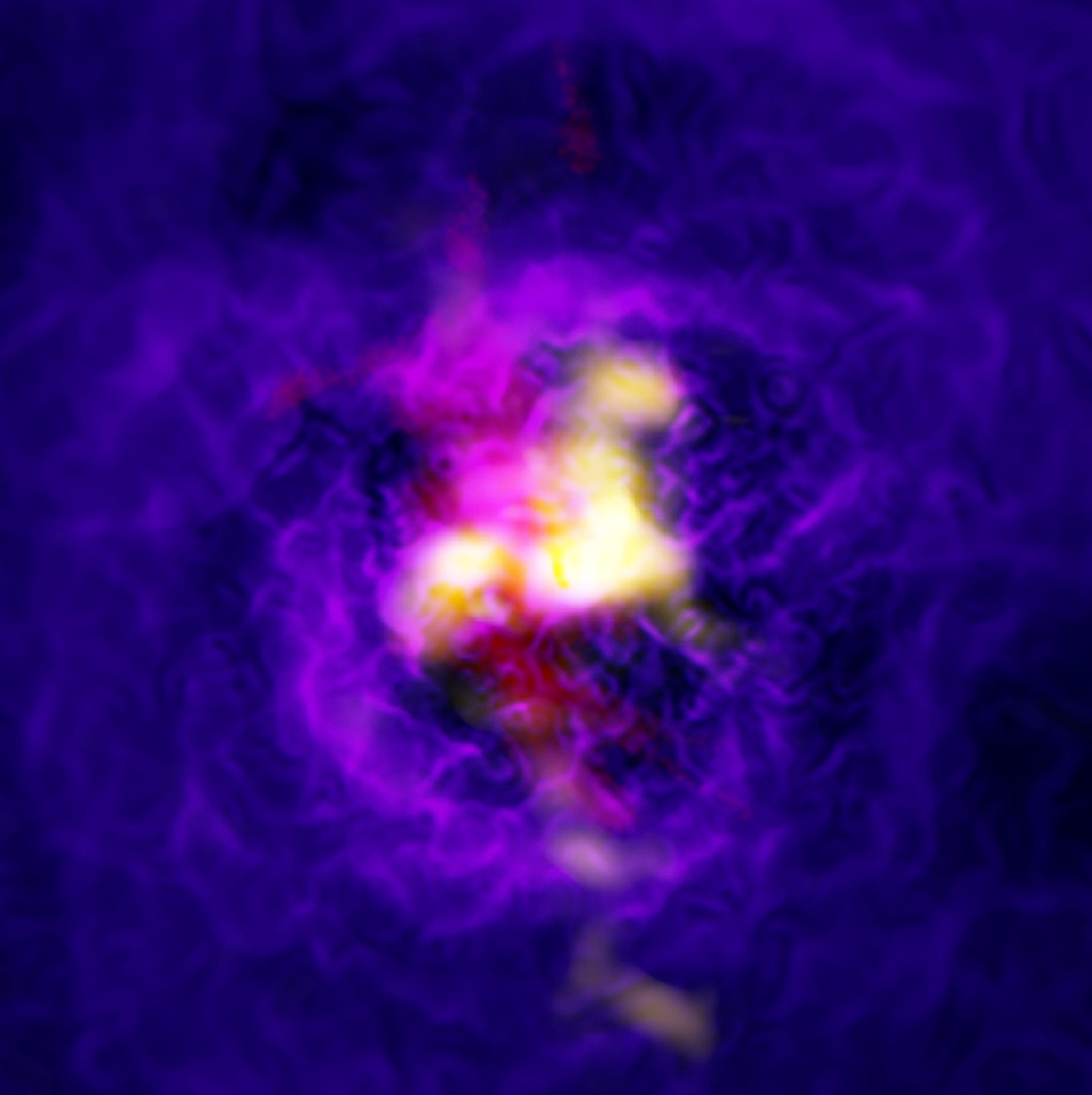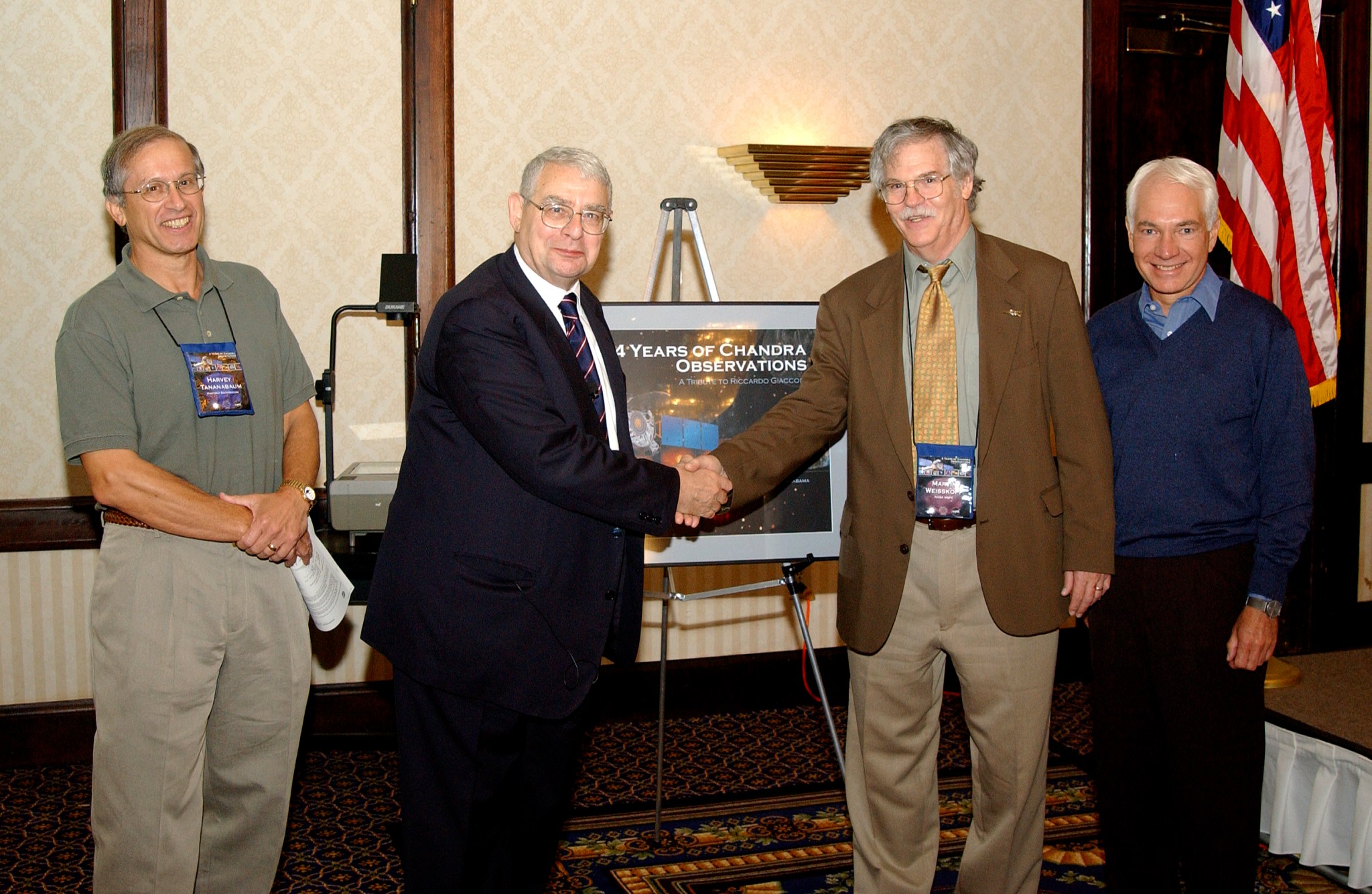In This Week’s Star
- NASA Marshall Names New Engineering Director and Deputy
- Largest Piece of SLS Rocket Test Hardware Moved to Marshall for Testing
- Rocket Science in 60 Seconds: Building an Engine that Roars
- Cosmic Fountain Powered by Giant Black Hole
- Marshall Remembers Dr. Riccardo Giacconi
- Marshall Hosts Tech Talk on Engine Thruster Development, Value of Partnerships
- This Week in NASA History: Apollo 8 Launches – Dec. 21, 1968
- Marshall Projects and Programs Highlighted on ‘This Year @NASA’
- Obituaries
NASA Marshall Names New Engineering Director and Deputy
Larry Leopard has been appointed director of the Engineering Directorate at NASA’s Marshall Space Flight Center, following Preston Jones’s appointment as Marshall’s associate director, technical.
Succeeding Leopard as deputy director for engineering is Lisa Watson-Morgan, who most recently was the directorate’s associate director of operations.
“Larry and Lisa bring to bear a depth of engineering expertise in developing and testing innovative systems, propulsion elements and cutting-edge technologies that support all facets of NASA’s mission,” said Marshall Center Director Jody Singer. “I look forward to their continued leadership and the strengthening of Marshall’s capabilities under their guidance.”
The center’s largest organization, comprised of more than 2,000 civil service and contractor personnel, the Engineering Directorate is responsible for the design, testing, evaluation and operation of flight hardware and software associated with space transportation, spacecraft systems, science instruments and payloads now in development at Marshall.
Leopard joined NASA in 1990. His early work at Marshall includes contributions to space shuttle propulsion elements; the Space Shuttle Main Engine Technology Test Bed; Rocket-Based Combined Cycle propulsion technology; Fastrac 60K engine; International Space Station payloads, Environmental Control and Life Support Systems and research facilities for space station; small satellite technology demonstrations; and multiple science instruments. Since his appointment to the Senior Executive Service in 2008, the personnel system covering top managerial positions at federal agencies, he has held several leadership roles within the Engineering Directorate. Most recently, he was its deputy director 2016 to 2018.
A native of Athens, Alabama, Leopard graduated from the University of Alabama in Huntsville in 1987 with a bachelor’s degree in mechanical engineering. He has received numerous NASA awards, including the Medal for Outstanding Leadership in 2007 and 2011; the Medal for Exceptional Achievement in 1997; the Silver Snoopy, presented by NASA’s astronaut corps, in 1993; multiple director’s commendations; and numerous group achievement and special service awards. Leopard and his wife Shane live in Athens and have two children.
Watson-Morgan joined NASA in 1989. Since her appointment to the Senior Executive Service in 2013, she has served as manager of Marshall’s Chief Engineer’s office, director of the Spacecraft and Vehicle Systems Department and most recently as associate director of operations for the Engineering Directorate.
A native of Huntsville, Watson-Morgan graduated from the University of Alabama in Tuscaloosa in 1991 with a bachelor’s degree in industrial engineering. She also received a master’s degree in industrial and systems engineering in 1994 and a doctorate in engineering management in 2008, both from the University of Alabama in Huntsville. She has received numerous NASA awards, including a Meritorious Presidential Rank Award in 2018; Exceptional Achievement Medal in 2010; and the Exceptional Service Medal in 2001. Watson-Morgan and her husband live in Huntsville and have three children.
Largest Piece of SLS Rocket Test Hardware Moved to Marshall for Testing
Technicians at NASA’s Michoud Assembly Facility moved the largest piece of structural test hardware for America’s new deep space rocket, the Space Launch System, from the factory to the dock where it was loaded onto NASA’s barge Pegasus Dec. 14. The liquid hydrogen tank test article will make its way up the Mississippi River to NASA’s Marshall Space Flight Center, where dozens of hydraulic cylinders in Test Stand 4693 will push and pull on the giant tank, subjecting it to the same stresses and loads it will endure during liftoff and flight. The test hardware is structurally identical to the flight version of the liquid hydrogen tank that will comprise two-thirds of the core stage and hold 537,000 gallons of liquid hydrogen cooled to minus 423 degrees Fahrenheit. (NASA/Steven Seipel)
Rocket Science in 60 Seconds: Building an Engine that Roars
Rocket Science in 60 Seconds gives you an inside look at work being done at NASA to explore deep space. Jonathan Pahed, component product engineer for Aerojet Rocketdyne working on NASA’s Space Launch System (SLS) rocket, shares improvements being made to the assembly process of the RS-25 engine that will be used to launch the SLS rocket off the pad. For more information about SLS, visit: https://www.nasa.gov/exploration/systems/sls/index.html.
Cosmic Fountain Powered by Giant Black Hole
Before electrical power became available, water fountains worked by relying on gravity to channel water from a higher elevation to a lower one. This water could then be redirected to shoot out of the fountain and create a centerpiece for people to admire.
In space, awesome gaseous fountains have been discovered in the centers of galaxy clusters. One such fountain is in the cluster Abell 2597. There, vast amounts of gas fall toward a supermassive black hole, where a combination of gravitational and electromagnetic forces sprays most of the gas away from the black hole in an ongoing cycle lasting tens of millions of years.
Scientists used data from the Atacama Large Millimeter/submillimeter Array (ALMA), the Multi-Unit Spectroscopic Explorer (MUSE) on ESO’s Very Large Telescope (VLT) and NASA’s Chandra X-ray Observatory to find the first clear evidence for the simultaneous inward and outward flow of gas being driven by a supermassive black hole.
Cold gas falls toward the central black hole, like water entering the pump of a fountain. Some of this infalling gas (seen in the image as ALMA data in yellow) eventually reaches the vicinity of the black hole, where the black hole’s gravity causes the gas to swirl around with ever-increasing speeds, and the gas is heated to temperatures of millions of degrees. This swirling motion also creates strong electromagnetic forces that launch high-velocity jets of particles that shoot out of the galaxy.
These jets push away huge amounts of hot gas detected by Chandra (purple) surrounding the black hole, creating enormous cavities that expand away from the center of the cluster. The expanding cavities also lift up clumps of warm and cold gas and carry them away from the black hole, as observed in the MUSE/VLT data (red).
Eventually this gas slows down and the gravitational pull of material in the center of the galaxy causes the gas to rain back in on the black hole, repeating the entire process.
A substantial fraction of the three billion solar masses of gas are pumped out by this fountain and form a filamentary nebula — or cosmic “spray” — that spans the innermost 100,000 light years of the galaxy.
These observations agree with predictions of models describing how matter falling towards black holes can generate powerful jets. Galaxy clusters like Abell 2597, containing thousands of galaxies, hot gas, and dark matter, are some of the largest structures in the entire universe. Abell 2597 is located about 1.1 billion light years from Earth.
A paper by Grant Tremblay describing these results appeared in the Sept. 18 issue of The Astrophysical Journal. NASA’s Marshall Space Flight Center manages the Chandra program for NASA’s Science Mission Directorate. The Smithsonian Astrophysical Observatory in Cambridge, Massachusetts, controls Chandra’s science and flight operations.
Marshall Remembers Dr. Riccardo Giacconi
By Brian Odom
Marshall joins the scientific community in mourning the loss of the “Father of X-ray astronomy” and Nobel Laureate, Riccardo Giacconi who died on Dec. 9, 2018 at the age of 87.
Born in Genoa, Italy in 1931 and earning his doctorate in physics from the University of Milan in 1954, Giacconi came to the United States in 1956, and 2 years later became part of the Cambridge, Massachusetts firm American Science and Engineering (AS&E) Company.
Over the course of his career, Giacconi made numerous discoveries beginning with the detection of the first extra-solar X-ray source, Scorpius X-1, and evidence for a background glow of unresolved sources during a sounding rocket experiment on June 12, 1962.
“Both NASA’s Marshall Space Flight Center and I had a long and fruitful interaction with the Nobel Laureate Professor Riccardo Giacconi,” says NASA’s Chandra X-ray Observatory Project scientist, Martin Weisskopf, who spent a portion of his career collaborating with Giacconi on X-ray astronomy projects.
After developing and launching the first X-ray astronomy orbiting satellite, Uhuru, in 1970, Giacconi began his first association with Marshall developing Skylab experiment S-054, which he described as combining the “highest sensitivity and angular resolution ever achieved in X-ray solar observations with the long duration and operational flexibility.”
In 1973, Giacconi moved the core of his AS&E science team to the Harvard-Smithsonian Center for Astrophysics (CfA) where he directed his efforts toward the development of the second of NASA’s High Energy Astronomy Observatories, the Einstein X-ray Observatory. The first imaging X-ray telescope for extra-solar sources and a Marshall managed project, Einstein launched on Nov. 13, 1978. The objectives of the Einstein mission included imaging and spectrographic studies of specific X-ray sources and studies of the diffuse X-ray background.
“The success of Einstein placed X-ray astronomy on the map as a vital tool for understanding the universe and its constituents,” said Weisskopf.
It was in 1976, while still developing Einstein that Giacconi and Harvey Tananbaum first proposed what would become NASA’s Chandra X-ray Observatory, a Marshall-managed mission which launched on July 23, 1999 and continues to detect X-ray emission from very hot regions of the universe such as exploded stars, clusters of galaxies, and matter around black holes.
“It is not very often that one person’s insight, persistence, and intellectual brilliance leads to the opening of an entire new field of research, but that is exactly what happened with Riccardo Giacconi,” said Tananbaum.
Tananbaum argues that Giacconi’s scientific genius lay with his ability to develop a comprehensive blueprint for X-ray astronomy from the beginning. “One year after he and his team discovered the first extra-solar X-ray source along with the X-ray background in 1962,” Tananbaum stated, “Riccardo laid out a vision for the field which included the first dedicated X-ray satellite (Uhuru) and a 1-meter diameter, 10-meter focal length, arc-second angular resolution X-ray telescope (Chandra).”
In 1981, Giacconi left CfA to become the first permanent director of the Space Telescope Science Institute in Baltimore, Maryland where he stayed until 1993 overseeing the development of a facility to direct the science mission of the Hubble Space Telescope. In 2002, Giacconi claimed half of the Nobel Prize in physics for his “pioneering contributions to astrophysics, which have led to the discovery of cosmic X-ray sources.”
“It was a privilege and an honor to work alongside Riccardo and the rest of our colleagues to design, develop, and launch these missions and to see the amazing science discoveries which they have enabled,” said Tananbaum.
“Riccardo was a brilliant scientist with deep insights. He was larger than life in his interactions and fought for what he believed. He led and taught my generation how to accomplish complex NASA missions,” said Weisskopf. “We will miss him. Such towering and insightful personalities do not appear often.”
Odom is the Historian at NASA’s Marshall Space Flight Center.
Marshall Hosts Tech Talk on Engine Thruster Development, Value of Partnerships
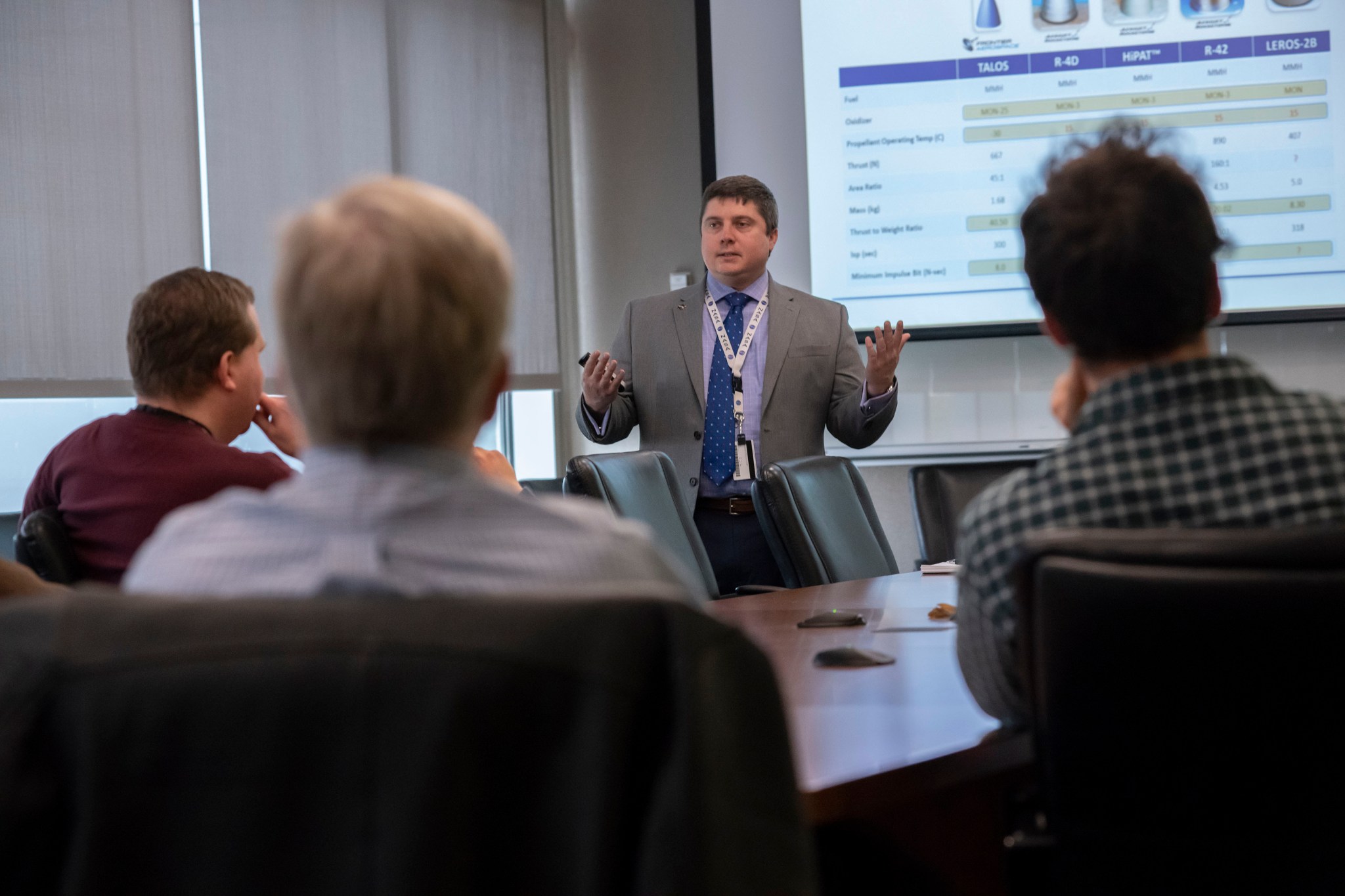
Greg Barnett, center, project manager for the “Thruster Advancement for Low-temperature Operation in Space” project, or TALOS, addresses team members at a Tech Talk at NASA’s Marshall Space Flight Center Dec. 13. Barnett, a propulsion systems engineer in Marshall’s Science & Technology Office, was joined via phone by Jim McKinnon, president of Frontier Aerospace in Simi Valley, California, to discuss the TALOS project, which is flight-qualifying its thruster to support a lunar lander test mission planned for 2020. The innovative thruster burns MON-25/MMH propellants, which yield lower-temperature freezing points than conventional propellants — a critical capability for long-duration missions to the Moon and Mars. The project is sponsored by NASA’s Space Technology Mission Directorate and led by Frontier Aerospace with support from Marshall — a partnership both Barnett and McKinnon identified as critical to the future success of government and commercial aerospace endeavors. Marshall’s monthly Tech Talks highlight cutting-edge research and technology development by Marshall and its partners, enabling an exchange of creative ideas across all aerospace disciplines. Visit ExplorNet for more information on the series. (NASA/MSFC/Fred Deaton)
This Week in NASA History: Apollo 8 Launches – Dec. 21, 1968
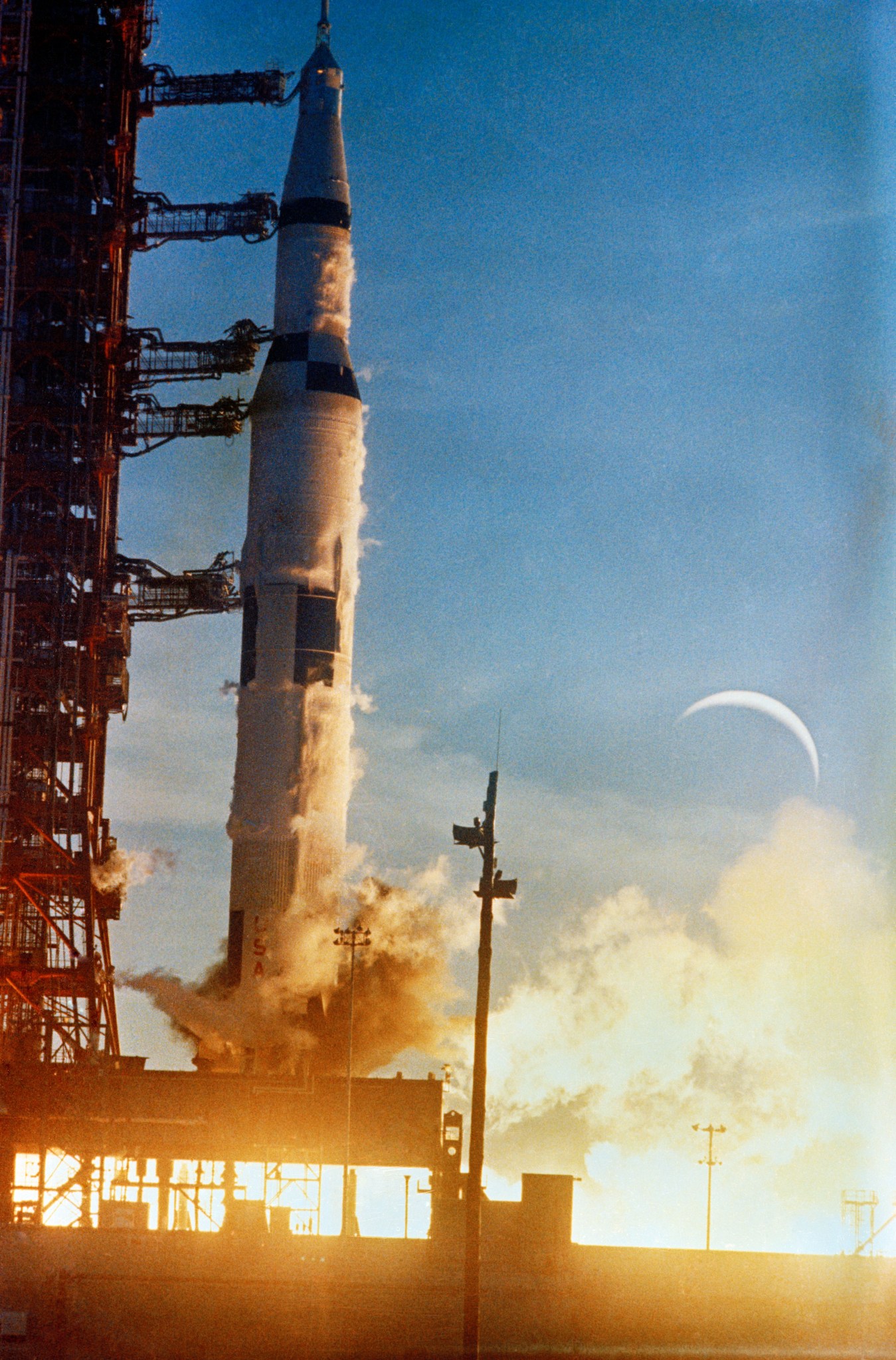
This week in 1968, Apollo 8 lifted off from Launch Complex 39A at NASA’s Kennedy Space Center. The primary mission objectives included a coordinated performance of the crew, the command and service module and the support facilities. The mission also demonstrated trans-lunar injection — a propulsive maneuver used to set a spacecraft on a trajectory that will cause it to arrive at the Moon. All primary mission objectives were met and detailed test objectives were achieved. The crew escaped Earth’s gravity, traveled to the lunar vicinity, and orbited the Moon before returning to Earth on Dec. 27. Apollo 8 was the first manned flight of the Saturn V vehicle and the first manned lunar orbit mission. Now through December 2022, NASA will mark the 50th anniversary of the Apollo Program that landed a dozen astronauts on the Moon between July 1969 and December 1972, and the first U.S. crewed mission — Apollo 8 — that circumnavigated the Moon in December 1968. The NASA History Program is responsible for generating, disseminating, and preserving NASA’s remarkable history and providing a comprehensive understanding of the institutional, cultural, social, political, economic, technological and scientific aspects of NASA’s activities in aeronautics and space. For more pictures like this one and to connect to NASA’s history, visit the Marshall History Program’s webpage. (NASA)
Marshall Projects and Programs Highlighted on ‘This Year @NASA’
Projects and programs managed at NASA’s Marshall Space Flight Center are featured in “This Year @NASA,” a yearly recap video of the weekly video program, “This Week @ NASA,” broadcast nationwide on NASA-TV and posted online.
In 2018, progress developing architecture to go to the Moon and onto Mars included an August rollout test of the mobile launcher, which has been modified to support NASA’s Space Launch System rocket. More successful testing of the RS-25 rocket engines that will power SLS when it launches astronauts aboard the agency’s Orion spacecraft to deep space also occurred throughout the year.
NASA’s InSight lander touched down on Mars in November, kicking off a mission to study the Red Planet’s interior. Within its first week, InSight recorded vibrations caused by the Martian wind — the very first sounds ever sensed directly from the surface of Mars.
After traveling through space for more than two years and farther than 2 billion kilometers, NASA’s OSIRIS-REx spacecraft arrived at the asteroid Bennu on Dec. 3. OSIRIS-REx will study the asteroid and return a sample to Earth in September 2023.
NASA’s New Horizons spacecraft made its first detection of Ultima Thule, the Kuiper Belt object it is scheduled to fly by on New Year’s Day, 2019. Ultima Thule will be the farthest planetary body from Earth ever explored by spacecraft.
OSIRIS-REx and New Horizons are part of NASA’s New Frontiers Program. Marshall manages New Frontiers for the agency’s Science Mission Directorate.
NASA’s Parker Solar Probe launched in August to “touch the Sun,” gathering data that could help us better understand space weather. It has already made the closest approach to the Sun by a human-made object. Marshall helped develop and test Parker’s Solar Probe Cup, Part of Parker’s Solar Wind Electrons Alphas and Protons, or SWEAP, instrument suite.
Two groundbreaking spacecraft ended science operations in 2018: Dawn, which became the first mission to orbit two destinations beyond Earth — asteroid Vesta and dwarf planet Ceres; and Kepler, the prolific planet hunter which revealed our night sky to be filled with more planets than stars.
InSight, Dawn and Kepler are projects of the Science Mission Directorate’s Discovery Program, managed by Marshall.
View this and previous episodes at “This Week @NASA” on NASA’s YouTube page.
Obituaries
Harold C. Euler Jr., 89, of Huntsville, died Dec. 9. He retired from the Marshall Center in 2007 as an aerospace engineer. He is survived by his wife, Patricia Euler.













